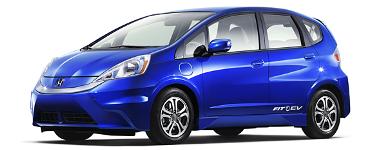The ACEEE (American Council for an Energy-Efficient Economy) has been singling out the greenest vehicles for a decade and a half, so their list is eagerly awaited for those focused on fuel efficiency and low pollutant emissions. The 2013 list has some familiar models, but has more new vehicles than any previous list, which shows the rapid shift the market has taken to high-efficiency vehicles.
Here’s the list:
2. Honda Fit EV
3. Toyota Prius Hybrid
4. Toyota Prius Plug-in Hybrid
5. Honda Civic Hybrid
7. Volkswagen Jetta Hybrid
8. Smart fortwo convertible/coupe
9. Scion iQ
10. Ford Focus EV
High-scoring cars like the Nissan LEAF and Chevrolet Volt are not on the above list of 2013 model years, because ACEEE has only scored the 2012 models.
Rigorous Evaluation on Paper
Compared with some of the vehicle awards, such as those from enthusiast magazines or even Consumer Reports, the ACEEE awards are based on information submitted by the manufacturers rather than physical testing of the vehicles. The group weighs tailpipe emissions of criteria pollutants, fuel consumption and greenhouse gas emissions (or conversely, fuel efficiency). This year the organization also factored in emissions related to manufacturing, upstream fuel emissions for gasoline, diesel and natural gas as well as the environmental impact of electricity production for electric and plug-in vehicles. Though the ACEEE scale theoretically goes to 100, the best vehicles generally are only slightly above the mid-point. This year, the best 10 were only seven points apart, ranging from 51 to 58, an indicator of both the advances of technology and relative greenness of many vehicles today.
 Of course the downside of using submitted information is that real world performance, such as recent complaints about hybrid fuel economy falling short of official EPA numbers, does not show up. On the other hand, ACEEE brings a wealth of data beyond what appears on a vehicle’s Monroney label in their evaluation. The group also takes into account different classes of vehicles and notes the greenest of each category as well as the overall top models highlighted above. And it did update its scores on 2011 and 2012 Hyundai/Kia models when that manufacturer admitted it had submitted inflated fuel economy numbers for several of its cars.
Of course the downside of using submitted information is that real world performance, such as recent complaints about hybrid fuel economy falling short of official EPA numbers, does not show up. On the other hand, ACEEE brings a wealth of data beyond what appears on a vehicle’s Monroney label in their evaluation. The group also takes into account different classes of vehicles and notes the greenest of each category as well as the overall top models highlighted above. And it did update its scores on 2011 and 2012 Hyundai/Kia models when that manufacturer admitted it had submitted inflated fuel economy numbers for several of its cars.
For comparison, the EPA on its FuelEconomy.gov website shows its Top 10 as electric cars since it ranks emissions only by greenhouse gas emissions including CO2, nitrous oxide, and methane. ACEEE 2013 ranks are based on 70% CO2 and 30% criteria pollutants, and appears to consider added lifecycle emissions. When they split up the top fuel economy winners by type of vehicle they end up with a mixture of EVs, plug-in hybrids and hybrids.
This Year’s Winners
The crop of Best 10 winners this year includes five hybrids, three plug-in vehicles (one hybrid and two EVs) and two small conventional gasoline internal combustion engine models. Half of the vehicles on the Top 10 list are new models evaluated for the first time. ACEEE noted that the number of models scoring 45 points or above (considered an above-average score for the 1000+ configurations that they evaluate) is at a record level this year with 150 models hitting that mark. Included in the larger group are additional hybrids, plug-in hybrids and EVs, clean diesels, a CNG model and additional internal combustion engine models. The proliferation of different technologies all hitting the mark for “greenness” is a sign of how far the auto industry has come already toward meeting future targets for fuel efficiency and reduced emissions of both greenhouse gases and criteria pollutants.
 As the ACEEE says, the “greener choices” are multiplying and are not the province of any one manufacturer or even manufacturers from one country. The group noted that half of their Top 12 picks were from domestic manufacturers as an example. ACEEE also offers a tool on the subscription portion of its website where consumers and configure and compare different models as part of their shopping process.
As the ACEEE says, the “greener choices” are multiplying and are not the province of any one manufacturer or even manufacturers from one country. The group noted that half of their Top 12 picks were from domestic manufacturers as an example. ACEEE also offers a tool on the subscription portion of its website where consumers and configure and compare different models as part of their shopping process.
Picking winners and losers in the “green” space is always fraught with difficulty, but in reality no more than any award process. There are always those who will agree or disagree with the picks and many more who will nit-pick the selection criteria or perceived bias. In ACEEE’s case it should be noted that several highly efficient vehicles didn’t make their Best 10 list because the organization set a minimum threshold of 1,000 units of sale to be considered, which took the Mitsubishi iMiEV and Tesla Model S out of consideration. For us, we believe more is better and any contest that highlights fuel efficient vehicles, as ACEEE definitely does, is to be encouraged.
Published – Jan. 17, 2013
